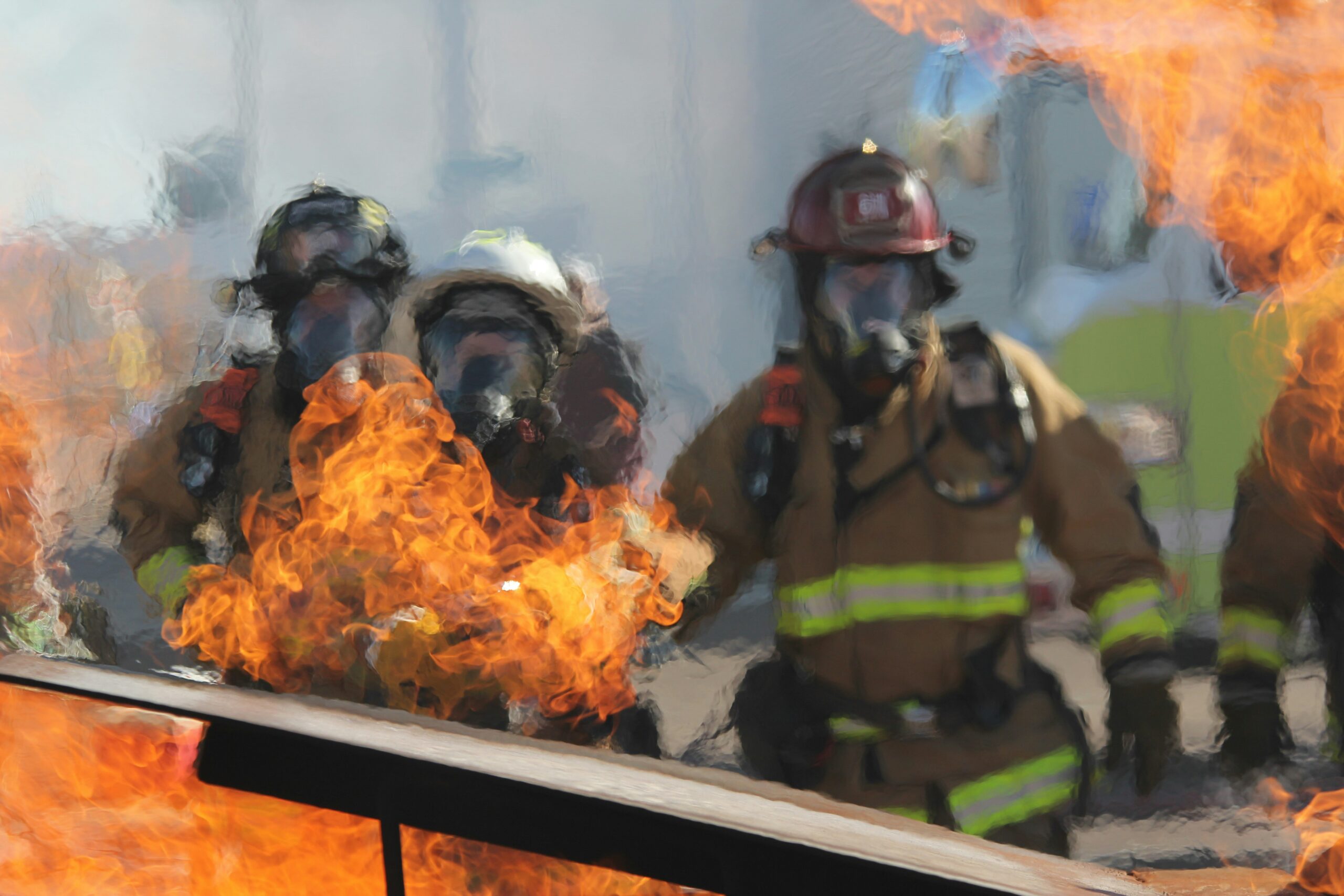Fire safety is a critical aspect of both residential and commercial environments. Understanding how to prevent fires from starting or spreading can save lives, protect property, and minimize financial losses. This article will delve into various practices and measures to ensure fire safety.
Understanding Fire Safety
Fire safety involves a set of practices aimed at reducing the destruction caused by fire. These practices include preventive measures to avoid the ignition of uncontrolled fires and strategies to limit the spread and impact of fires once they occur. Fire safety is essential in both residential and commercial settings, and it encompasses a wide range of activities, from installing fire alarms and extinguishers to conducting fire drills and ensuring compliance with fire safety regulations.
The Fire Triangle
A fire requires three elements to ignite and sustain: oxygen, fuel, and heat. This is known as the fire triangle. Removing any one of these elements can prevent a fire from starting or spreading. Understanding the fire triangle is fundamental to fire prevention and protection. By controlling these elements, you can significantly reduce the risk of fire hazards.
Also Read: Sara Blake Cheek Age Wiki Biography, Net worth, Zodiac Sign
Preventing Fires from Starting
Install Smoke Alarms
Smoke alarms are your first line of defense. Install them on every level of your home, inside bedrooms, and outside sleeping areas. Test them monthly and replace batteries annually. Smoke alarms can detect fires early, giving you and your family crucial time to escape. They are a vital component of any fire safety plan and should be maintained regularly to ensure they function correctly.
Create an Escape Plan
Develop a fire escape plan with multiple exit routes from each room. Practice this plan regularly with all household members. An effective escape plan includes identifying all possible exits, establishing a meeting point outside the home, and practicing the plan to ensure everyone knows what to do in case of a fire. Regular drills can help reinforce the plan and ensure everyone is prepared.
Keep Flammables Away from Heat Sources
Store flammable materials in approved containers and keep them away from heat sources like stoves, heaters, and fireplaces. Proper storage of flammable materials is crucial to prevent accidental ignition. This includes keeping items like gasoline, paint, and cleaning supplies in well-ventilated areas away from potential heat sources.
Practice Safe Cooking
Never leave cooking unattended. Keep flammable items away from the stove and learn how to handle grease fires properly. Cooking is a leading cause of home fires, and practicing safe cooking habits can significantly reduce the risk. This includes staying in the kitchen while cooking, keeping a fire extinguisher nearby, and knowing how to smother a grease fire with a lid or baking soda.
Use Electrical Appliances Responsibly
Avoid overloading electrical outlets and extension cords. Regularly inspect cords for damage and replace any that are frayed or cracked. Electrical fires can be prevented by using appliances according to the manufacturer’s instructions, avoiding the use of damaged cords, and ensuring that outlets are not overloaded.
Maintain Heating Systems
Ensure proper airflow and safe spacing for heating systems. Have them inspected and maintained regularly by qualified professionals. Heating systems, including furnaces, space heaters, and fireplaces, should be kept clean and in good working order. Regular maintenance can help identify potential issues before they become fire hazards.
Educate Others
Teach family members and colleagues about fire safety practices. Conduct regular fire safety discussions and drills. Education is a key component of fire prevention. By teaching others about fire safety, you can help ensure that everyone knows how to prevent fires and respond appropriately in case of an emergency.
Preventing Fires from Spreading
Install Fire Suppression Systems
Fire suppression systems, such as sprinklers and fire extinguishers, can help control and extinguish fires before they spread. These systems are designed to detect and respond to fires automatically, providing an additional layer of protection. Regular inspections and maintenance are essential to ensure these systems function correctly when needed.
Use Fire-Resistant Materials
Incorporate fire-resistant materials in building construction and furnishings. This includes fire doors, fire-rated walls, and fireproof coatings. Fire-resistant materials can help contain fires and prevent them from spreading to other areas. They are an important consideration in both new construction and renovations.
Compartmentalize Spaces
Use fire doors and partitions to create compartments within buildings. This helps contain fires to specific areas, preventing them from spreading. Compartmentalization is a key strategy in fire safety, as it can limit the spread of fire and smoke, providing more time for occupants to escape and for firefighters to respond.
Regular Fire Safety Inspections
Conduct regular fire safety inspections to ensure compliance with fire safety regulations and identify potential hazards. Inspections should be carried out by qualified professionals who can assess the building’s fire safety measures and recommend improvements. Regular inspections can help identify and address issues before they become serious problems.
Maintain Clear Escape Routes
Ensure that all escape routes are free of obstructions and clearly marked. Regularly check that fire exits are accessible and functional. Clear and accessible escape routes are essential for safe evacuation during a fire. This includes keeping hallways and stairwells free of clutter and ensuring that exit signs are visible and illuminated.
Train Employees and Occupants
Provide fire safety training to employees and building occupants. This includes how to use fire extinguishers, locate fire exits, and follow evacuation procedures. Training programs can help ensure that everyone knows what to do in case of a fire, reducing panic and improving the chances of a safe evacuation.
Also Read: Bibian Norai Wiki Biography, Net worth, Zodiac Sign
Final Words
Preventing fires from starting or spreading requires a combination of awareness, preparedness, and proper safety practices. By implementing the measures outlined in this article, you can significantly reduce the risk of fire-related incidents and ensure the safety of individuals and property. Remember, fire safety is a continuous process that involves regular training, inspections, and updates to fire safety plans and equipment.For more information on fire safety, consult resources from reputable organizations such as the National Fire Protection Association (NFPA) and the United States Fire Administration (USFA). Stay informed, stay prepared, and stay safe.
Frequently Asked Questions
What are the key elements of the fire triangle?
The fire triangle consists of three elements: oxygen, fuel, and heat. Removing any one of these elements can prevent a fire from starting or spreading.
How can you prevent kitchen fires?
Never leave cooking food unattended, keep flammable items away from the stove, and regularly clean the stovetop and oven.
What is the importance of smoke alarms in fire prevention?
Smoke alarms detect fires early, providing crucial time to evacuate. Install them on every level of your home and test them monthly.
How should flammable materials be stored?
Store flammable materials in approved, leak-proof containers and keep them away from heat sources.
What are the best practices for using electrical appliances safely?
Avoid overloading outlets, regularly inspect cords for damage, and unplug appliances when not in use.
How can you create an effective fire escape plan?
Develop a plan with multiple exit routes from each room, establish a meeting point outside, and practice the plan regularly.
What role do fire extinguishers play in fire safety?
Fire extinguishers can control and extinguish small fires before they spread. Keep them accessible and ensure everyone knows how to use them.
Why is it important to keep escape routes clear?
Clear escape routes ensure quick and safe evacuation during a fire. Regularly check that fire exits are accessible and free of obstructions.
How can regular fire safety inspections help?
Inspections identify potential hazards and ensure compliance with fire safety regulations, helping to prevent fires from starting.
What are the benefits of using fire-resistant materials?
Fire-resistant materials help contain fires and prevent them from spreading, providing more time for evacuation and firefighting.
How can you prevent fires caused by smoking?
Avoid smoking indoors, use large ashtrays, and ensure cigarette butts are fully extinguished before disposal.
What measures can be taken to prevent electrical fires?
Regularly test electrical equipment, avoid using damaged cords, and ensure proper installation and maintenance of electrical systems.
How can good housekeeping practices prevent fires?
Keeping the workplace clean and tidy reduces fuel sources for fires. Dispose of waste regularly and store flammable materials safely.
What should you do if you discover a fire?
Sound the alarm, evacuate immediately, and call emergency services. Do not attempt to extinguish large fires on your own.
How can fire drills improve fire safety?
Regular fire drills ensure everyone knows their role in an emergency, improving response times and reducing panic.
What is the purpose of fire doors?
Fire doors help contain smoke, flames, and heat within one area, preventing the fire from spreading and providing more time for evacuation.
How can you prevent fires from spreading in a building?
Use fire suppression systems, close doors and windows, and ensure fire safety equipment is in good working order.
What are the common causes of residential fires?
Common causes include cooking accidents, electrical faults, and heating equipment. Practicing safe habits can reduce these risks.
How can you educate others about fire safety?
Conduct regular fire safety discussions, provide training on using fire extinguishers, and practice evacuation procedures.
What should be included in a home fire safety plan?
A home fire safety plan should include smoke alarms, fire extinguishers, clear escape routes, and regular fire drills.





